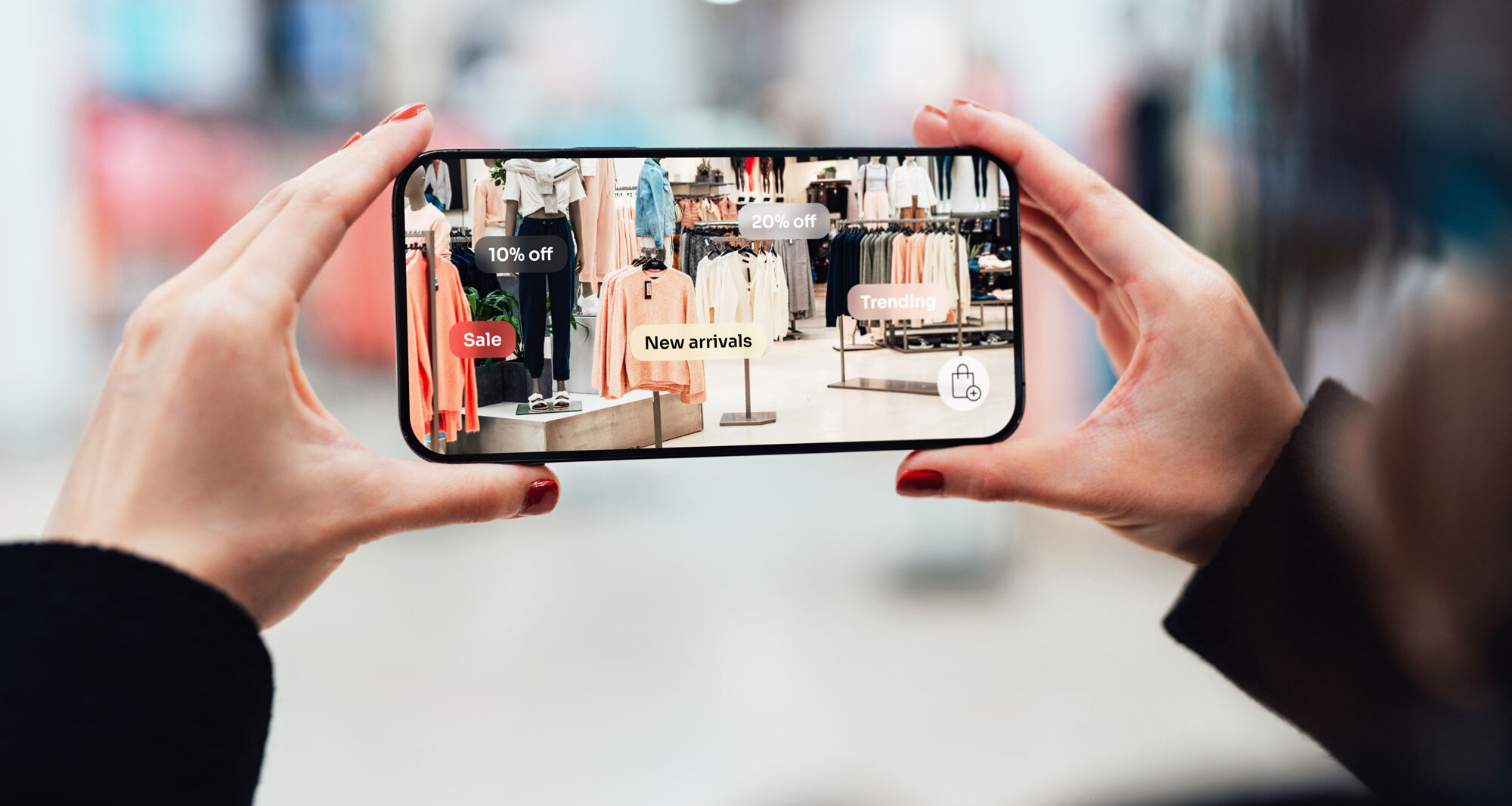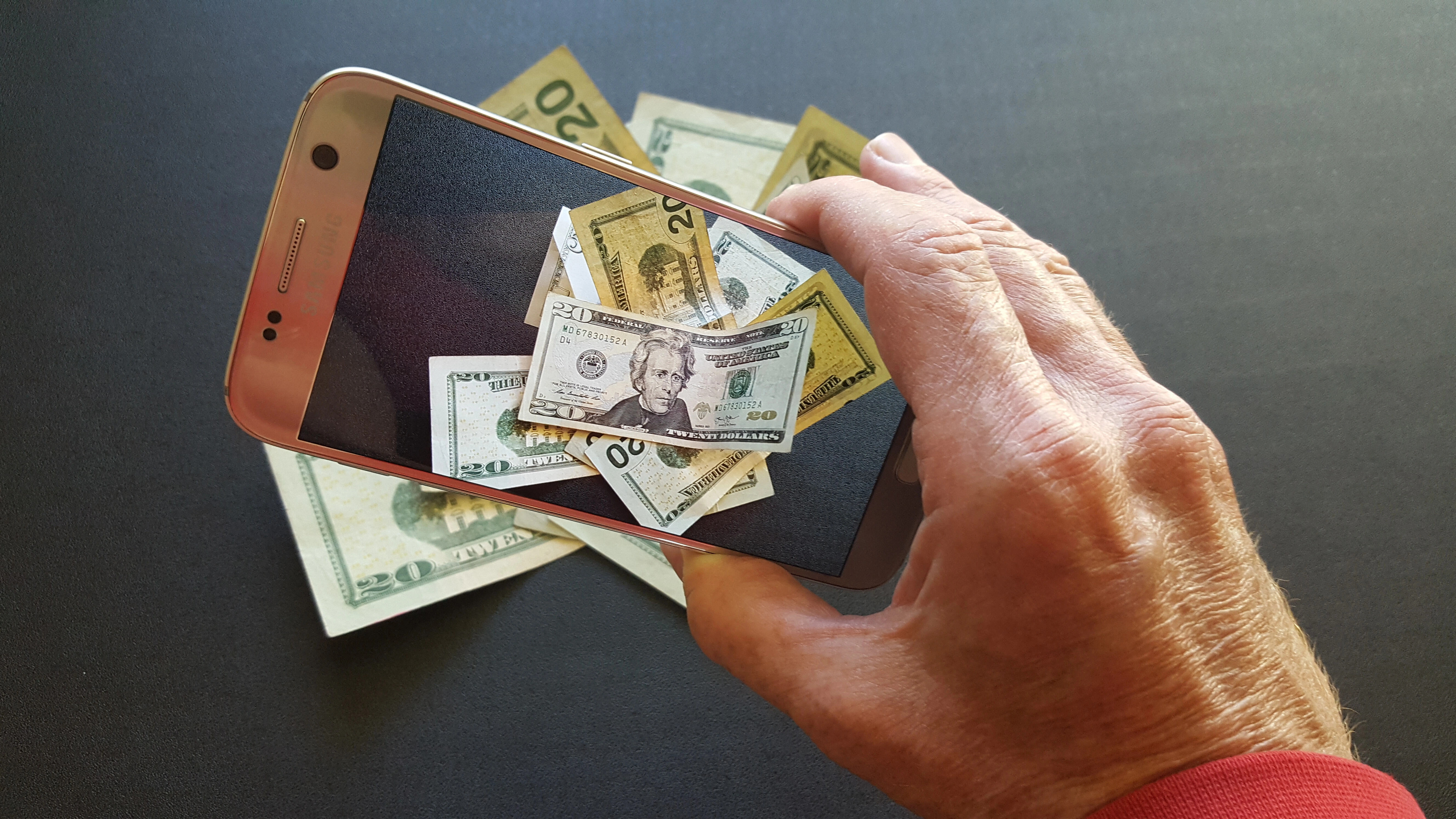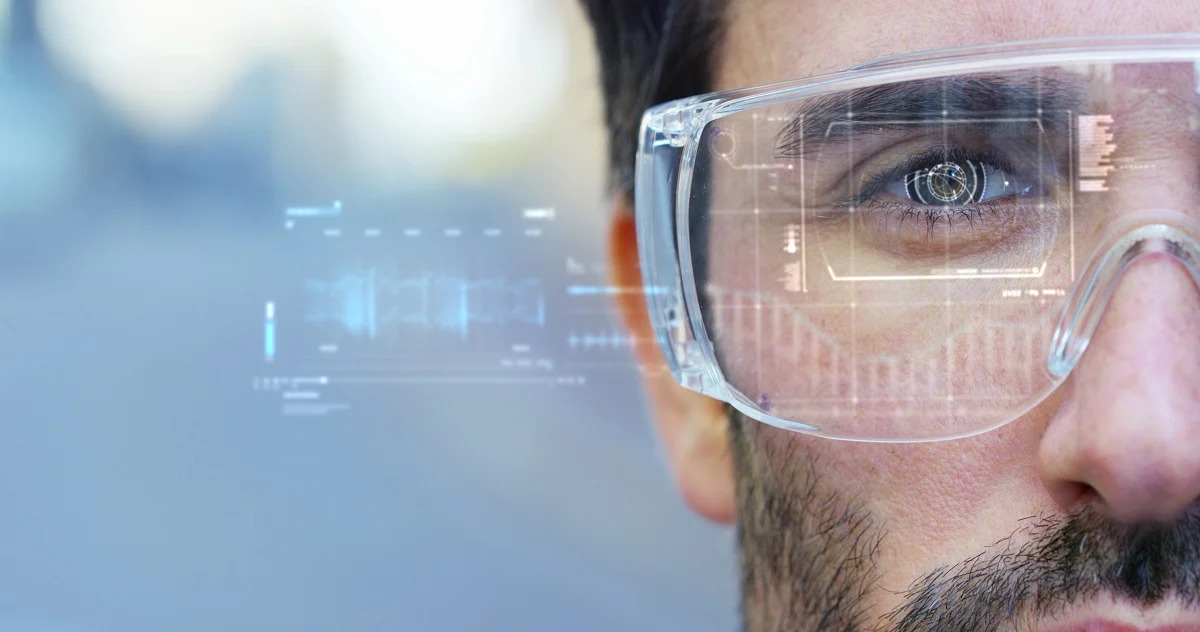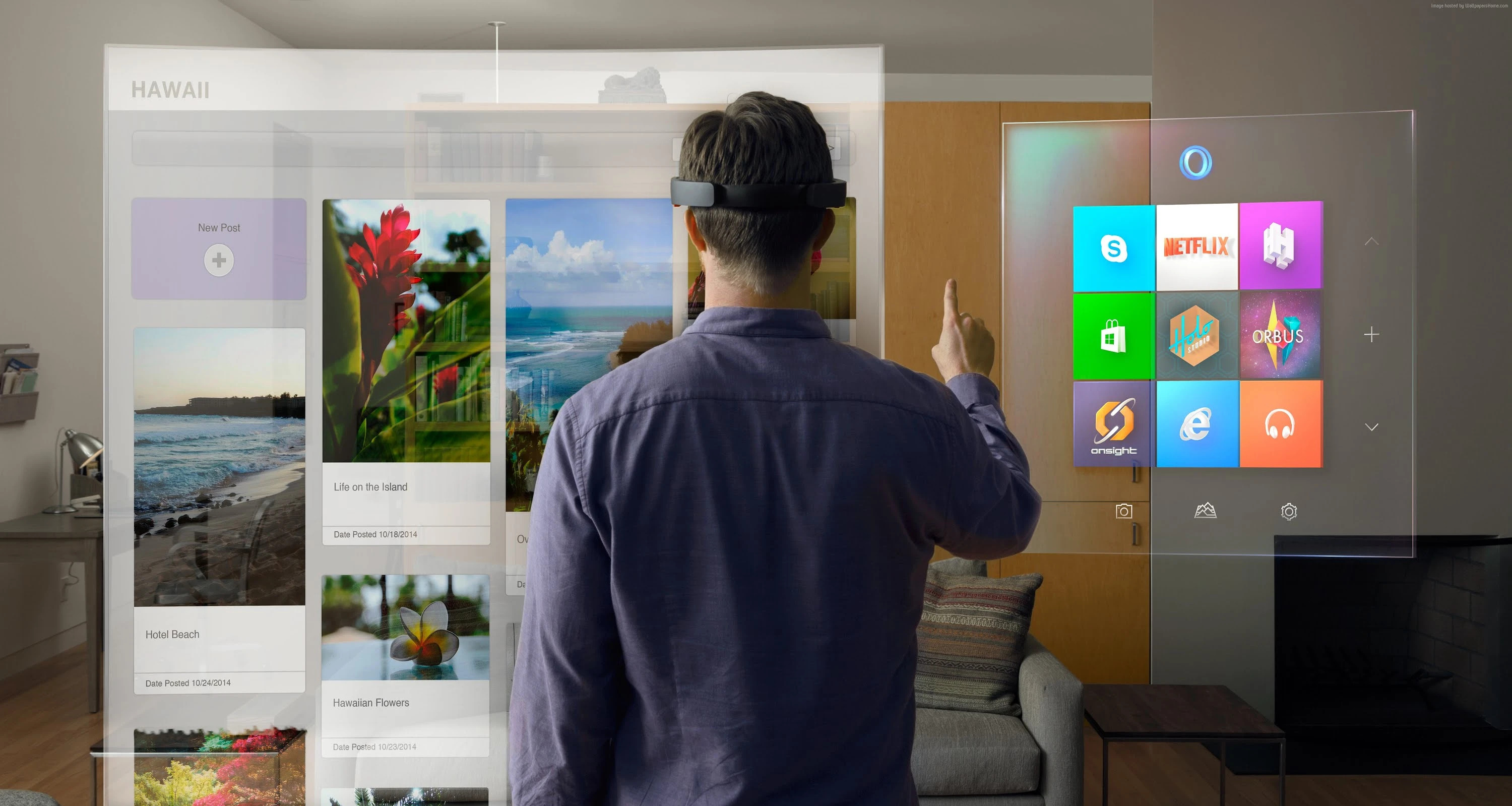Introduction
Augmented Reality (AR) is a technology that overlays digital information, images, videos, or audio onto the real world, enhancing our perception and interaction with the environment around us. It has gained significant popularity and has transformed various industries over the past decade. By seamlessly merging the physical and digital world, AR opens up a wide range of possibilities in gaming, education, navigation, healthcare, retail, architecture, tourism, advertising, manufacturing, and sports.
AR has revolutionized the way we experience entertainment, with gaming being one of the most prominent applications. From Pokémon Go to immersive virtual reality headsets, AR has the ability to bring virtual elements into the real world, creating captivating experiences for gamers of all ages. It allows players to interact with virtual characters and objects in their physical surroundings, blurring the lines between fantasy and reality.
In the realm of education and training, AR offers innovative ways to enhance learning experiences. By overlaying digital content onto textbooks, worksheets, or even museum exhibits, AR provides students with interactive and engaging materials. Complex subjects can be simplified through visualizations, making them more accessible and memorable.
When it comes to navigation and wayfinding, AR can be a lifesaver. Imagine being able to see interactive directions or points of interest layered over the real world when navigating through unfamiliar cities or buildings. AR-based navigation apps can provide real-time guidance, making the user’s journey more convenient and efficient.
The healthcare and medicine industry has also embraced AR technology. Surgeons can use AR headsets to project important patient information, such as vital signs or medical records, directly into their field of vision during procedures. AR can also aid in training medical professionals, allowing them to practice complex procedures in a simulated environment before performing them on patients.
Retail and shopping experiences have been greatly enhanced by AR. With the ability to virtually try on clothing or see how furniture looks in their homes, customers can make more informed decisions before making a purchase. AR-powered shopping apps also provide personalized recommendations and offer immersive shopping experiences.
In architecture and design, AR allows professionals to visualize and manipulate 3D models of buildings and structures in real-world environments. Clients can walk through virtual representations of their future homes or offices, making design choices and modifications before construction begins.
Tourism and travel have also seen a significant boost with the incorporation of AR. Visitors can use AR-enabled devices to access information about landmarks, historical sites, and local attractions, adding an interactive layer to their exploration.
In the realm of advertising and marketing, AR campaigns can capture consumers’ attention by providing interactive and immersive experiences. AR-powered advertisements and product demonstrations allow potential customers to engage with a brand in a unique and memorable way.
Manufacturing and industrial processes can benefit from AR by providing real-time information and guidance to workers on the shop floor. AR headsets can overlay instructions, diagrams, or safety warnings, reducing errors and improving productivity.
Finally, AR has also made its way into the realm of sports and fitness. Athletes can use AR goggles to receive real-time performance metrics or to analyze their technique. Fitness enthusiasts can enjoy interactive workout sessions or track their progress using AR-powered apps.
As AR continues to evolve and become more accessible, its potential applications are expanding at a rapid pace. The examples mentioned here are just the tip of the iceberg, and we can expect to see even more innovative uses of AR in the future.
Augmented Reality in Gaming
Augmented Reality has brought a revolutionary change in the gaming industry by merging the digital and physical worlds. It allows gamers to interact with virtual elements in their real-world surroundings, creating immersive and captivating experiences. One of the most notable examples of AR gaming is Pokémon Go, which took the world by storm in 2016.
In Pokémon Go, players use their mobile devices to capture virtual Pokémon creatures that are superimposed onto the real world. By utilizing GPS and camera functionalities, the game overlays Pokémon characters onto the player’s surroundings, making it seem as if they are in the actual Pokémon universe. Players can explore their neighborhoods, parks, and landmarks to discover and catch different Pokémon species. The game’s success highlighted the immense potential of augmented reality in gaming and introduced a new way of experiencing interactive entertainment.
AR gaming goes beyond Pokémon Go. It includes a wide range of genres, from puzzle games to adventure games, all incorporating augmented reality elements. For example, games like “The Walking Dead: Our World” allow players to fight virtual zombies that appear in their real-world locations, creating a thrilling and realistic gaming experience.
AR has also paved the way for multiplayer gaming experiences. With shared virtual environments, players can collaborate or compete with each other in real-time. This opens up opportunities for social interaction and teamwork, as players can see and communicate with each other’s avatars, even when they are physically in different locations.
Besides mobile gaming, AR has also made its way into the realm of virtual reality (VR) gaming. Through devices like the Oculus Rift or HTC Vive, players can experience fully immersive and interactive VR worlds supported by augmented reality elements. These devices incorporate cameras that enable users to see their real-world surroundings while being immersed in a virtual environment, creating a seamless blend of both worlds.
AR technology also holds promise for the future of gaming. With advancements in wearable AR devices like smart glasses, players can have a hands-free and more immersive gaming experience. These devices can project virtual objects directly into the user’s field of view, allowing for a more natural and interactive gameplay.
Overall, augmented reality has revolutionized the gaming industry by providing gamers with unique and interactive experiences. From catching Pokémon in the real world to fighting zombies or exploring virtual worlds, AR gaming has truly transformed how we engage with digital entertainment.
Augmented Reality in Education and Training
Augmented Reality (AR) is transforming the field of education and training by providing interactive and immersive learning experiences. By overlaying digital content onto the real world, AR enhances students’ understanding and engagement with complex subjects.
AR has the potential to revolutionize traditional classroom settings by bringing static textbooks to life. With AR-enabled devices, students can scan images or pages in textbooks to unlock interactive elements, such as 3D models, videos, or quizzes. This provides a more interactive and hands-on learning experience, making it easier for students to grasp difficult concepts.
Beyond textbooks, AR can be used in science experiments, allowing students to virtually experience phenomena that are difficult to witness in a classroom. For example, students can use AR to simulate chemical reactions, observe celestial movements, or explore the human anatomy in a visual and engaging way. This not only enhances their understanding but also fosters curiosity and critical thinking.
AR is also valuable in vocational and technical training. For instance, in automotive or engineering training, AR can overlay step-by-step instructions onto real machinery, helping trainees understand complex procedures and reducing the risk of errors. This hands-on approach allows individuals to practice in a safe simulated environment before working with real equipment.
In the medical field, AR has the potential to revolutionize the way medical professionals are trained. Surgeons can use AR headsets to project important patient information, such as X-rays or vital signs, directly into their field of vision during surgeries. This real-time feedback enhances the precision and accuracy of procedures. AR can also provide medical students with virtual patient cases, allowing them to practice diagnosing and treating a wide range of conditions.
Another use of AR in education is language learning. AR applications can overlay translations or pronunciations onto objects or signs, allowing language learners to immerse themselves in a virtual language environment. This makes language learning more contextual and interactive, enhancing both vocabulary acquisition and cultural understanding.
AR technology is also beneficial in improving accessibility for students with special needs. By using AR-based assistive tools, students with visual impairments can experience tactile exploration of objects or environments, allowing them to overcome barriers and fully participate in the learning process.
Overall, augmented reality is revolutionizing education and training by providing interactive and immersive learning experiences. Whether it’s bringing textbooks to life, simulating complex procedures, or enhancing language learning, AR has the potential to transform the way we acquire knowledge and skills.
Augmented Reality in Navigation and Wayfinding
Augmented Reality (AR) has transformed the way we navigate and find our way in both familiar and unfamiliar environments. By overlaying digital information onto the real world, AR enhances our perception and provides interactive guidance for navigation and wayfinding.
One of the primary applications of AR in navigation is through smartphone apps that utilize GPS and camera functionalities. These apps can superimpose directions, points of interest, and real-time information onto the user’s view of the real world. This allows users to access navigational guidance without having to constantly refer to a map or navigation instructions.
AR-enabled navigation apps can provide real-time overlays, such as arrows or visual cues, to guide users to their desired destination. For example, when walking in a city, AR can show directional arrows on the smartphone screen, indicating the correct path to take. This allows users to navigate through complex urban environments more effortlessly, even without prior knowledge of the area.
AR-based navigation is not limited to pedestrians. It has also become a valuable tool for drivers. Head-up displays (HUDs) in cars can use AR technology to project information onto the windshield, allowing drivers to view pertinent details such as speed, directions, and upcoming road conditions without taking their eyes off the road.
In addition to assisting with navigation, AR can enhance the wayfinding experience in large indoor spaces, such as airports, shopping malls, or museums. AR-based mobile apps can provide users with interactive maps and directions within these venues. By simply pointing their smartphone camera at their surroundings, users can see labels and virtual signposts overlaid onto the real environment, helping them navigate through complex indoor spaces with ease.
AR in navigation is not just limited to providing directions—it can also provide contextual information. Users can access reviews, ratings, or historical facts about nearby places or landmarks, providing them with valuable insights as they explore new surroundings.
Besides aiding individual users, AR in navigation can also have a social component. Users can share their location or create virtual meeting points in real-time, making it easier for friends or colleagues to find each other in crowded places.
Overall, augmented reality has transformed navigation and wayfinding by providing users with interactive and intuitive guidance. From pedestrian navigation to driving assistance and indoor wayfinding, AR has made navigating our world more convenient, efficient, and enjoyable.
Augmented Reality in Healthcare and Medicine
Augmented Reality (AR) technology has made significant advancements in the healthcare and medicine industry, transforming the way medical professionals diagnose, treat, and train. By overlaying digital information onto the real-world environment, AR enhances patient care, surgical procedures, and medical education.
One of the most impactful uses of AR in healthcare is during surgical procedures. Surgeons can use AR headsets or glasses to project important patient information, such as CT scans or X-rays, directly into their field of view. This real-time overlay allows surgeons to seamlessly refer to critical data during the procedure, enhancing precision and reducing the risk of errors.
AR also facilitates minimally invasive surgeries by offering real-time guidance. Overlaying virtual markers onto the patient’s body or using preoperative imaging helps surgeons accurately locate and navigate through complex anatomical structures, increasing the success rate of delicate procedures.
Medical training is another area where AR plays a significant role. Medical students can utilize AR applications to practice procedures such as dissections or inserting intravenous lines on virtual patients. This enables students to gain realistic surgical experience without the need for cadavers or live patients, enhancing their skills and confidence before performing actual procedures.
Moreover, AR has the potential to improve diagnostic accuracy. By overlaying medical images onto the patient’s body, doctors can observe and compare the real-time data with the patient’s condition. This helps in identifying potential abnormalities or guiding the placement of medical devices, resulting in faster and more accurate diagnoses.
AR also benefits patients by enhancing rehabilitation and physical therapy. AR-based applications can provide real-time feedback and guidance during exercises, ensuring that patients perform movements correctly and track their progress. This interactive approach promotes greater engagement and motivation in the rehabilitation process.
AR has even found applications in patient education. By utilizing AR visualization, healthcare professionals can provide patients with interactive representations of their medical conditions or treatment plans. This improves patients’ understanding and involvement in their healthcare decisions, leading to better treatment outcomes and compliance.
Additionally, AR assists in the development of prosthetics and assistive devices. By overlaying virtual models onto a patient’s body, healthcare providers can ensure the optimal fit and functionality of custom-made devices, improving the quality of life for individuals with limb differences or disabilities.
Overall, augmented reality is transforming the healthcare and medicine industry by revolutionizing surgical procedures, medical training, diagnostic accuracy, patient rehabilitation, patient education, and the development of prosthetics. This technology holds significant potential for improving patient outcomes and enhancing the overall healthcare experience.
Augmented Reality in Retail and Shopping
Augmented Reality (AR) has revolutionized the retail and shopping experience by merging the physical and digital worlds. By overlaying virtual content onto the real-world environment, AR enhances product visualization, interaction, and personalized customer engagement.
One of the significant ways AR is transforming retail is through virtual try-on experiences. AR-powered apps and mirrors allow customers to virtually try on clothing, accessories, or even cosmetics without physically trying them on. By simply using a smartphone or AR-equipped mirror, customers can see how items look on them in real-time, helping them make more informed purchase decisions and reducing the need for returns.
AR is also changing the way customers shop for furniture and home décor. With AR-enabled apps, customers can virtually place furniture items in their living spaces to see how they fit and whether they match their existing décor. This technology enables them to visualize how the products will look before making a purchase, eliminating the need for guesswork and enhancing the overall shopping experience.
AR-powered shopping apps provide personalized recommendations based on customers’ preferences and behaviors. These apps can analyze past purchases, browsing history, and user feedback to suggest products that match users’ specific tastes. This saves customers time and makes their shopping experience more efficient and enjoyable.
AR-guided shopping experiences can also be found in brick-and-mortar stores. Through AR-enabled kiosks or displays, customers can access additional product information, reviews, or related items by simply scanning or pointing their smartphone at the product or shelf. This augmented information empowers customers with more comprehensive knowledge, making their purchasing decisions more well-informed.
AR-powered marketing campaigns are becoming a trend in the retail industry. Brands are utilizing AR to create interactive and immersive experiences that engage customers and strengthen brand awareness. For example, AR can bring static advertisements to life, allowing customers to interact with virtual products or characters and even make purchases directly through the AR experience.
The integration of AR in retail also extends to loyalty programs and rewards. AR apps can enable customers to scan products to collect points or unlock exclusive offers. This gamified approach not only increases customer retention and engagement but also provides an element of fun and excitement to the shopping process.
Online retail platforms are leveraging AR to bridge the gap between the virtual and physical worlds. By using AR to showcase products in a more interactive and three-dimensional way, customers can now have a more immersive shopping experience from the comfort of their homes, enhancing their confidence and satisfaction when making online purchases.
In summary, augmented reality has transformed retail and shopping by enhancing the product try-on experience, providing personalized recommendations, enabling interactive marketing campaigns, improving in-store information access, and bridging the gap between online and offline shopping. AR has revolutionized how customers engage with brands, empowering them with more informed choices and creating a more immersive retail experience.
Augmented Reality in Architecture and Design
Augmented Reality (AR) has become an indispensable tool in the field of architecture and design, enabling professionals to visualize, innovate, and communicate their ideas more effectively. By overlaying virtual models onto the real-world environment, AR enhances the design process and provides immersive experiences for both architects and clients.
AR transforms the way architects and designers present their concepts to clients. Instead of relying solely on 2D drawings or computer-generated renderings, AR allows designers to showcase their vision in a more interactive and realistic manner. With AR-enabled devices, clients can walk through virtual representations of proposed buildings, experiencing the scale, materials, and spatial arrangement as if they were already built. This helps clients make more informed decisions, speeding up the approval process and reducing misunderstandings.
In addition to client presentations, AR enhances the collaboration process among architects and designers. Multiple team members can simultaneously view and interact with virtual 3D models, making it easier to discuss and evaluate design options. AR enables instant visualizations of design changes and iterations, fostering better communication and more efficient decision-making among project stakeholders.
AR is also valuable in interior design and decoration. By overlaying virtual furniture, finishes, and lighting in real-time, interior designers can provide clients with a realistic preview of how their spaces will look and feel. This allows for more accurate design decisions and gives clients a sense of ownership and involvement in the design process.
AR technology aids in spatial planning and layout design. Architects can use AR to visualize different design options for floor plans, furniture arrangements, or traffic flow within a space. This enables them to evaluate the functionality and efficiency of the design before implementing it in the physical environment.
Furthermore, AR facilitates the integration of sustainable design principles. By overlaying environmental data onto the physical environment, architects and designers can assess factors such as solar orientation, shading, or energy efficiency in real-time. This helps in making informed decisions that maximize the sustainable performance of the design.
AR is also valuable in construction and building maintenance. On-site workers can use AR headsets to overlay digital instructions, diagrams, or 3D models directly onto the physical construction site. This improves accuracy, reduces errors, and streamlines the construction process. Additionally, facilities managers can use AR to access maintenance information for equipment, locate utilities, or visualize hidden infrastructure, simplifying the maintenance and operational processes.
In summary, augmented reality has revolutionized the architecture and design industry by enhancing client presentations, improving collaboration among professionals, aiding spatial planning, facilitating interior design decisions, promoting sustainable design practices, and streamlining construction and maintenance processes. AR has become an indispensable tool that transforms the design experience and improves the overall quality of built environments.
Augmented Reality in Tourism and Travel
Augmented Reality (AR) has revolutionized the tourism and travel industry by enhancing the way people explore and experience destinations. By overlaying digital information onto the real world, AR provides interactive and immersive experiences for travelers, making their journeys more enriching and memorable.
One of the primary applications of AR in tourism is providing virtual information about landmarks and attractions. AR-powered mobile apps and devices can overlay historical facts, interesting stories, or multimedia content onto tourists’ view of their physical surroundings. This creates an augmented layer of information, allowing travelers to learn about the culture, history, and significance of the places they visit in a more engaging and interactive way.
AR-based navigation apps assist tourists in finding their way around unfamiliar cities and tourist destinations. By superimposing virtual arrows and direction markers onto the real-world environment, AR provides visual guidance and simplifies the navigation process. Travelers can confidently explore new places, knowing that they have an augmented guide to assist them along the way.
AR can also enhance the museum and exhibition experience. Through AR-enabled devices, visitors can access additional information, videos, or 3D reconstructions when they point the device at exhibits or artworks. This adds a new layer of interactivity and depth to the visitor’s understanding and appreciation of the displayed objects.
AR has also transformed the way tourists view accommodations. With AR, travelers can virtually walk through hotel rooms or vacation rentals before booking. By overlaying virtual furnishings and amenities onto the real environment, AR allows travelers to get a realistic sense of the space and make more informed decisions about their accommodations.
Furthermore, AR can provide travelers with enhanced dining experiences. AR-powered menu apps can overlay food images, descriptions, or even allergen information onto menu items when users point their smartphones at them. This enables travelers to make more informed choices and adds an interactive element to the dining experience.
AR-powered translation apps and devices have also made it easier for travelers to overcome language barriers. By using the camera function, these applications can recognize and translate text in real-time, providing travelers with instant translations of signs, menus, or other printed materials. This makes it easier for travelers to navigate and communicate in foreign countries.
AR technology has also given rise to virtual travel experiences. While not a replacement for physical travel, virtual reality (VR) technologies that incorporate AR elements allow travelers to virtually visit destinations and landmarks, immersing themselves in different cultures without leaving their homes. This offers a new level of accessibility and exploration for those who may have limitations or wish to plan future trips.
In summary, augmented reality has transformed the tourism and travel industry by providing interactive and immersive experiences, enhancing navigation and information access, improving accommodation and dining decisions, and even offering virtual travel experiences. AR adds a new dimension to the way people explore and connect with the world, making travel more engaging, educational, and enjoyable.
Augmented Reality in Advertising and Marketing
Augmented Reality (AR) has transformed the landscape of advertising and marketing, providing brands with innovative ways to engage and captivate their audience. By overlaying virtual content onto the real world, AR creates immersive and interactive experiences that leave a lasting impact on consumers.
AR-powered advertisements have the ability to bring static print or digital ads to life. By using a smartphone or AR-enabled device, users can scan an ad and instantly unlock interactive and engaging content. This can include 3D product models, videos, games, or virtual characters that interact with the user in their physical environment. AR ads provide a more memorable and immersive experience, enhancing brand awareness and increasing user engagement.
AR can also transform the traditional shopping experience by allowing customers to virtually try on products or visualize how they will look in their own surroundings. By utilizing AR technology, companies provide customers with a realistic preview of how products will fit or appear in their homes. This level of interactivity helps reduce friction in the purchasing process and improves customer satisfaction.
AR is also leveraged in experiential marketing campaigns. Brands can create interactive augmented reality experiences at events, trade shows, or in-store activations to engage and excite their target audience. This can involve gamified experiences, virtual tours, or interactive product demonstrations that draw consumers into the brand’s story and create a lasting impression.
One example is the use of AR for virtual “try-before-you-buy” experiences. Makeup brands have developed AR applications that allow users to virtually try on different shades of cosmetics, helping them find the perfect match without having to physically test multiple products. This not only saves time but also enhances the overall shopping experience.
AR also enables location-based marketing campaigns. By utilizing geolocation data, brands can deliver AR content to users when they are near specific physical locations. This allows for targeted and contextually-rich advertising experiences, such as offering special promotions or personalized recommendations based on the user’s current surroundings.
AR experiences can also be seamlessly integrated into social media platforms. Many social media apps offer AR filters or effects that users can apply to their photos or videos. Brands can leverage these AR filters as part of their marketing campaigns, enabling users to interact with branded content and share it with their networks. This helps generate user-generated content and organic brand exposure.
AR also allows for unique storytelling opportunities. Brands can create immersive narratives by overlaying digital elements onto physical locations or objects. This provides consumers with a more engaging and memorable brand experience, fostering deeper connections and emotional resonance with the brand’s message.
Overall, augmented reality has revolutionized advertising and marketing by providing interactive and immersive experiences. AR-powered ads, virtual try-on experiences, experiential marketing activations, location-based campaigns, social media integration, and storytelling opportunities are just a few ways in which AR is transforming how brands engage with their audiences and leave a lasting impression.
Augmented Reality in Manufacturing and Industrial Processes
Augmented Reality (AR) has emerged as a game-changer in the manufacturing and industrial sectors by streamlining processes and enhancing productivity. By overlaying digital information onto the real world, AR provides workers with real-time guidance, reducing errors, improving efficiency, and optimizing overall operations.
AR technology has revolutionized the way manufacturing processes are carried out. By using AR headsets or smart glasses, workers can access real-time instructions, diagrams, or annotations directly within their field of view. This hands-free approach allows for greater focus and dexterity while performing complex tasks, reducing reliance on paper-based manuals or multiple devices.
AR-powered instructions in manufacturing provide step-by-step guidance. For example, AR can overlay virtual arrows and text onto physical objects, guiding workers through assembly processes or maintenance procedures. This not only reduces training time but also minimizes errors, leading to improved quality control and increased efficiency.
AR also assists in product design and prototyping. By using AR-powered design applications, engineers and designers can visualize and manipulate 3D models in a real-world environment, enhancing the design process and enabling faster iterations. This streamlines product development and reduces the time to market.
Quality control and inspection processes are also streamlined with the use of AR. AR can overlay virtual inspection guidelines or visual indicators directly onto the physical object or equipment being inspected. This ensures that workers perform inspections accurately and efficiently, reducing the risk of overlooking critical details.
AR plays a vital role in asset management and maintenance. By scanning equipment or machinery with AR-enabled devices, maintenance workers can access real-time information about the asset’s status, maintenance history, or troubleshooting guides. This enables proactive maintenance planning, timely repairs, and reduced downtime.
Incorporating AR into training and onboarding programs benefits new employees. AR can simulate realistic work environments and provide virtual training on equipment operation or safety protocols. This immersive approach ensures that workers are well-prepared and confident when they start their roles, reducing the learning curve and enhancing overall productivity.
AR is also valuable in remote collaboration scenarios. Through AR-enabled communication platforms, experts or supervisors can remotely assist and guide field workers or technicians. By sharing their field of view and overlaying annotations or instructions onto the worker’s view, AR facilitates real-time problem-solving and knowledge exchange.
Moreover, AR technology facilitates data visualization and analytics on the manufacturing floor. Real-time data can be superimposed onto equipment or workstations, providing workers with important information such as operating parameters, performance metrics, or production targets. This improves decision-making and enables workers to respond promptly to changes or issues.
Overall, augmented reality improves manufacturing and industrial processes by providing real-time guidance, streamlining assembly and inspection procedures, enhancing training and onboarding, optimizing asset management and maintenance, enabling remote collaboration, and providing data visualization and analytics. AR empowers workers with the information they need, simplifies complex tasks, and boosts overall productivity in various manufacturing and industrial contexts.
Augmented Reality in Sports and Fitness
Augmented Reality (AR) technology has made a significant impact on the sports and fitness industry, transforming the way athletes train, spectators engage, and fitness enthusiasts track their progress. By overlaying digital information onto the real world, AR enhances the sports and fitness experience, making it more interactive, immersive, and data-driven.
One of the key applications of AR in sports is in training and performance analysis. AR enables athletes to receive real-time performance metrics and feedback during practice sessions or competitions. AR-powered goggles or wearable devices can display metrics such as speed, heart rate, distance covered, and even technique analysis. This allows athletes to make instant adjustments and improve their performance in the moment.
AR also enhances the spectator experience by providing additional information and visual enhancements. With AR-enabled applications, viewers can access player statistics, live match analysis, or virtual replays overlaid onto the live video broadcast. This interactive and informative experience immerses spectators in the game and enhances their understanding and engagement.
AR has also transformed the way fitness enthusiasts track and monitor their progress. Fitness apps utilizing AR technology can overlay real-time health and fitness data onto the user’s view, providing instant feedback and motivation during workouts. This can include metrics such as heart rate, calorie burn, distance covered, and more. It allows users to set fitness goals, track their progress, and make adjustments to their routines for optimal results.
AR can enhance the group fitness experience by providing virtual instructors or trainers. With AR-enabled fitness apps or devices, users can follow along with virtual trainers who overlay exercise demonstrations and guidance onto the user’s view. This creates an immersive and interactive workout experience, bringing the expertise of professional trainers into users’ homes or fitness centers.
AR also adds an element of gamification to fitness activities. By incorporating virtual challenges, rewards, and interactive elements, AR-powered fitness apps can make workouts more engaging and enjoyable. This encourages users to stay motivated and achieve their fitness goals.
In sports broadcasting, AR is utilized to enhance visuals and provide additional information to viewers. AR graphics can be overlaid on the live broadcast, showing player statistics, game analysis, or visually highlighting key moments. This enhances the understanding and engagement of viewers, creating a more immersive and informative sports-watching experience.
AR technology is also utilized in sports simulations and training. Athletes can use AR to simulate game scenarios or practice specific techniques in a virtual environment. This allows them to refine their skills and make strategic decisions without the need for a physical field or opponents.
Beyond training and fitness, AR is also used to improve accessibility in sports. By utilizing AR-enabled devices, individuals with visual impairments can experience sports events through audio descriptions or tactile overlays, bringing the excitement of the game to a broader audience.
Overall, augmented reality is reshaping the sports and fitness industry by enhancing training and performance analysis, improving the spectator experience, enabling interactive fitness tracking, introducing virtual trainers and gamification, enhancing sports broadcasting, and promoting accessibility. AR technology adds an extra layer of engagement, information, and motivation, making sports and fitness activities more immersive and enjoyable for participants and spectators alike.
Conclusion
Augmented Reality (AR) has emerged as a transformative technology across various industries, revolutionizing the way we interact with the world around us. By overlaying digital information onto the real world, AR enhances our perception, communication, and engagement, unlocking new possibilities for entertainment, education, business, and everyday life.
In gaming, AR has brought virtual elements into our real-world environments, creating immersive and interactive experiences that blur the boundaries between fantasy and reality. Pokémon Go is a notable example of the power of AR in gaming, captivating millions of players worldwide.
In education and training, AR has revolutionized learning experiences by providing interactive and immersive content that enhances understanding and engagement. From interactive textbooks to virtual science experiments, AR makes complex concepts accessible and memorable.
Navigation and wayfinding have been significantly improved with AR technology. AR-powered navigation apps provide real-time guidance and overlay information onto our physical surroundings, making it easier to navigate through unfamiliar environments both on foot and on the road.
In healthcare and medicine, AR has transformed surgical procedures, medical training, and patient care. Surgeons can access critical patient information during surgeries, while medical students can practice procedures on virtual patients. Patients benefit from enhanced diagnostics and rehabilitation experiences.
Retail and shopping experiences have been revolutionized by AR, allowing customers to virtually try on products, visualize items in their homes, and receive personalized recommendations. AR-powered advertisements and marketing campaigns create interactive and memorable brand experiences.
In architecture and design, AR enhances client presentations, collaboration, visualization, and decision-making. Clients can walk through virtual representations of proposed designs, making informed decisions and reducing misunderstandings.
Tourism and travel have seen a significant boost with the incorporation of AR. AR provides interactive information about landmarks, enhances navigation in unfamiliar environments, and offers virtual travel experiences to inspire and engage travelers.
AR-powered advertising and marketing campaigns captivate audiences with interactive content, virtual try-on experiences, location-based targeting, and unique storytelling opportunities. AR has enhanced brand engagement and created immersive experiences to leave a lasting impact.
In manufacturing and industrial processes, AR improves efficiency, accuracy, and collaboration. By overlaying real-time instructions and data onto workers’ view, AR streamlines processes, enhances training, optimizes maintenance, and provides valuable insights for decision-making.
AR has also transformed the sports and fitness industry by enhancing training, improving the spectator experience, enabling interactive fitness tracking, and adding immersive elements to sports broadcasting. AR motivates athletes, engages spectators, and promotes active and healthy lifestyles.
In conclusion, augmented reality has permeated various industries, reshaping experiences, enhancing productivity, and enabling innovation. With the ongoing advancements in AR technology, we can expect even more exciting possibilities and applications in the future. AR continues to revolutionize the way we perceive and interact with the world, opening up new opportunities and transforming our everyday lives.

























